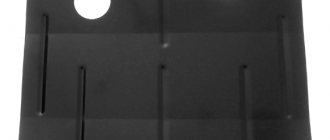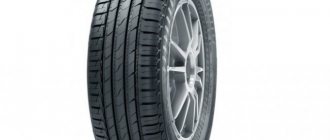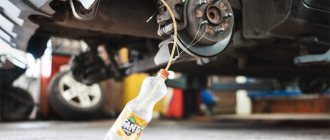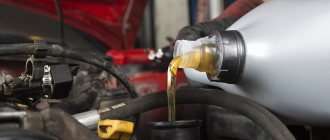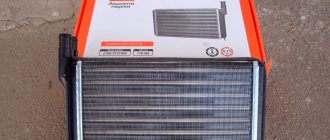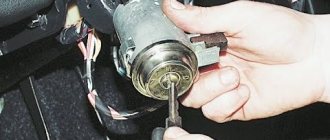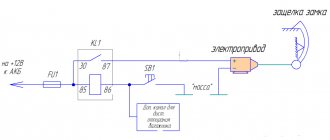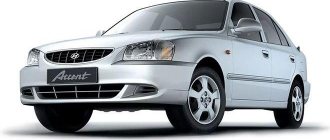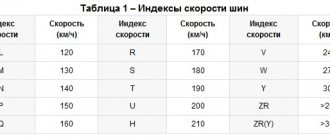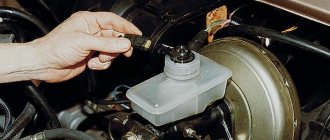Let's start with a banality. Every car has an engine, every engine has a crankcase, covered with a sump, which stores the oil used to lubricate the engine. In fact, it is precisely to protect the oil pan from all kinds of damage that an element is used, usually called crankcase protection.
Most often, this part, which is important for the health of the engine and the car as a whole, is made by stamping from a steel sheet; less often, the crankcase protection is made of aluminum and even less often of composite materials, which include, in particular, carbon fiber. For each car model, an individually configured crankcase protection is produced for its component power plants, because, as a rule, it does not require any modifications during installation due to the correspondence of the mounting holes to the mating elements located on the engine.
Among other things, a well-designed crankcase protection has technological openings necessary for servicing the power unit, made, for example, opposite the oil drain, or opposite the hatch through which access is provided to change the oil filter when the latter is replaced through the oil pan. When purchasing, you need to pay special attention to all these features, since they are made in order to avoid labor-intensive operations of removing/installing protection during maintenance.
Let's talk about extras. equipment when buying a new car? Part 2. Crankcase protection
Good afternoon, dear friends. Today we will continue the conversation about additional equipment offered at car dealerships. The second most popular after interior mats is engine crankcase protection
. For our roads, which like to “melt” along with the snow in the spring, this is more relevant than ever, because it won’t be difficult to break the engine if it falls into a hole, for example. For your safety, we recommend installing a crankcase protection.
What are they?
Let's get a look. We look at city cars and city driving. In pursuit of price, people often forget about quality and you can hear the phrase “I’ll buy it on the market for 1000” or “it’s a nightmare how much money for a piece of hardware”
Now, in order: Steel
There are two types of protection: sheet iron and stamped steel. Crankcase protection made from sheet iron is usually the most cost-effective, because... they are thinner and have a simple straight shape. As a rule, such protections do not very well follow the shape of the engine boot, thereby leaving significant holes, which entails the entry of dirt and foreign objects into the engine compartment. Here is an example of crankcase protection for Mazda 3, 6, cx-5, cx-9. (pictured Mazda 6 2019)
Judging by the photo, it’s not difficult to select the best option, isn’t it? Further in the photo, I indicated with red lines approximately where this or that protection would end, using the example of the Rival crankcase protection.
By the way, the Sheriff defense also has “wings”, which is good, but again it is a bit short. I’ll tell you a little secret, Rival crankcase protections are supplied as originals for Mazda, but the price from an official dealer is about 5 thousand with installation, or even higher! Prices in stores for the protections presented above are approximately the same, +- 200 rubles. In our store, such protection will cost you only 1,565 rubles, the fasteners are fully included. Installation on average 500 rubles. If, for example, you look at the Kia website, crankcase protection for the Kia Rio will cost 3,452.95, installation varies from 700 to 1,500 rubles. And here is the crankcase protection that we offer:
Manufactured by Rival, Yekaterinburg! The cost of protection is 1664 rubles.
Some protections have technological holes for draining the oil and replacing the filter, but as practice shows, they are not needed, because When carrying out maintenance at a good service station or an authorized dealer, the crankcase protection will still have to be removed to inspect the engine and gearbox for leaks.
In addition to crankcase protection, depending on the type of car, there are protections for the transfer case, separately for the gearbox (if the car is rear-wheel drive), as well as for the rear gearbox. Each of them is important in its own way and is recommended for installation, for example, in the Kia Sportage the rear gearbox actuator is located quite low and can easily be damaged, and this will be a non-warranty repair and will be quite expensive. Protection will certainly protect you from such problems.
The next type of protection is Aluminum!
Here, perhaps, I will talk about the fundamental differences from steel protections: Aluminum protections are thicker
(aluminum is much softer than steel, so the protections are made thicker to obtain the desired effect) They are much
lighter
, which is very convenient when removing/installing, and most importantly, they do not rust, this is in case the paint may “peel off” from the steel protection, or from acids or from damage. Such protections are significantly more expensive than steel ones and the choice is certainly yours. You just need to weigh all the pros and cons and decide whether the overpayment is worth it.
IMPORTANT!
The cheaper the crankcase protection, the lower the quality of both the metal itself, its color, and the fasteners included! You can often find bolts that will rust in the first year and when changing the oil you will have to simply cut them off, which will not save your time and money at all. As they say, the miser pays twice!
Source
Basic requirements for crankcase protection
When hitting an obstacle, part of the impact energy is absorbed by the protection itself and its fastening, and part is transferred to the body. In this case, the body and its elements should not be deformed. It is these conditions that the mechanical properties of such equipment must meet.
The rigidity of the protection can be considered optimal if deformation occurs only within the gap between it and the crankcase (usually this gap is selected within 20–30 mm, since its further increase leads to a decrease in ground clearance). This is due to the fact that:
In addition, rigidity is determined by safety conditions - in the event of a frontal collision, the engine should move downwards and not towards the driver and front passenger. To prevent the protection from interfering with this, it is made with a downward deflection. This ensures its directional deformation when the front part of the car is crushed.
The strength of the protection is ensured by the design and materials used. It must be such that it can withstand a collision with a sharp stone, metal rod, etc. without serious damage.
The strength of the fastening is guaranteed by installing protection only on the power elements of the car - body side members, engine subframe, suspension cross member. Attaching the protection to weaker elements, such as the cross member under the radiator, is not strong enough; this is only permissible for anthers. If the protection is installed in this way, the radiator may suffer from an impact.
The weight of the protection should be as low as possible while ensuring the necessary rigidity and strength. Therefore, its value for products offered by manufacturers is in the range of 7–15 kg, which does not lead to a noticeable increase in the load on the front axle of the car.
To determine the degree of rigidity of the protection at home, it is recommended to place it on the ground with its convex side up and stand on it. Good protection under a weight of 75 kg will bend no more than 10-15 mm without permanent deformation. If the deflection is greater, it is most likely a boot.
In addition to the above, good protections are characterized by the fact that they are installed on standard fasteners and there is no need to make additional holes in the body.
They must also have technological openings that make it easier to service a vehicle with installed protection, because eliminate the need for systematic dismantling when it is necessary to drain the oil, clean the filter, etc.
The quality of manufacturing of this equipment is also very important - the quality of painting, which, as a rule, serves as protection against corrosion, and trimming of edges, which affects not only the aesthetic perception of the product, but also the quality of its installation.
Another important attribute of good protection is the presence of rubber or plastic bumpers-shock absorbers at the points of contact with the car body, thanks to which the installed product does not vibrate, which means it does not create and even reduces the noise level in the cabin.
Owner reviews
If you have not yet decided which protection is better, perhaps reviews from car owners will help you make the right choice.
Composite protection
| Positive reviews | Negative reviews |
| Very light | High price |
| Easy to install | The holes were slightly shifted |
| Withstands hitting rocks |
Steel protection
| Positive reviews | Negative reviews |
| Low price | Started to rust |
| Takes hits well | Noise appeared after installation |
| Quick installation | Very heavy |
Best crankcase protection: steel, aluminum or carbon?
Protection made from structural steel , a relatively cheap material with a thickness of 2–3 mm, is most widespread. The plasticity of steel makes it possible to create stiffening ribs on the product by stamping (photo 4). Such protections can be easily adjusted in case of deformation from an impact.
Sheet steel makes it possible to manufacture protection with stiffeners
Most domestic manufacturers of steel protection coat their products with hot-curing epoxy polyester powder paint. This coating is quite durable with careful driving.
Inexpensive products for domestic cars are painted with ordinary nitro enamel. But even the best-quality coating cannot withstand mechanical impact, for example, when hitting a curb while parking.
Aluminum guards are lighter than steel ones, but are about five times more expensive. Therefore, they are especially often installed on sports cars, where weight plays a decisive role. For the manufacture of protection, both soft aluminum alloys and heat-strengthened (duralumin) D16T or B95 are used. In terms of strength, duralumin is not inferior to steel, but low ductility does not allow stamping of stiffeners. The design of such protections most often consists of a flat sheet 7–10 mm thick with several small transverse bends and holes for fastening and ventilation (photo 5).
Protection made of heat-strengthened aluminum alloy without longitudinal stiffeners
Heat-strengthened protections are much more difficult to straighten after an impact.
Composite protections (photo 6) are made from composite materials consisting of a base - reinforcing fiber and a binder - resin. Fiberglass is most often used as a base, less often carbon fiber, which is more expensive and less technologically advanced. The most durable material for composite protection is Kevlar fabric, developed for body armor, but its high price limits its use.
In terms of specific strength, glass and carbon fiber are 1.5 times superior to steel, and Kevlar is 2.5 times superior, which makes protection easier. However, composites do not withstand concentrated loads well. When hitting a sharp object, the resin crumbles, and the fibers that have lost their support break. Therefore, the thickness of composite protections has to be increased to 8–12 mm, which reduces their weight advantage.
Composite protections simultaneously serve as a boot, as they completely cover the engine compartment from below. Manufacturing technology allows them to be given any shape, but they are more expensive than steel ones.
The high strength of the fibers, increased thickness and trough-shaped shape make them very rigid. If the composite protection has cracks, it cannot be restored.
Steel
Steel is the most common material used in the production of oil pans for quite a long time.
pros
The main advantages of steel protection are:
- fairly simple recovery after a strong blow - straightening;
- high rigidity;
- low price.
Steel pallet
Minuses
- However, in addition to the undoubted advantages, there are also several disadvantages, the main one of which is corrosion.
- Poorly made pallets can resonate strongly while driving, creating unpleasant sounds.
- Sometimes the protection touches the crankcase of the power unit, and this can cause holes to appear through which oil begins to flow.
- The weight of the protective sheet is very large, sometimes it can reach up to fifteen kilograms.
- Significantly reduces ground clearance, as a result of which the car, on rough terrain, can, as drivers say, “lie to the bottom.”
- Incorrectly made or incorrectly installed steel protection very often prevents the motor from running away, thereby creating a danger during a collision.
Loading …
Selection of crankcase protection material
Selection of crankcase protection material
At first glance, the choice of crankcase protection and the material from which it is made looks simple - the main thing is that it protects. In fact, in addition to its direct function, protection must meet many requirements, both general and specific, characteristic of certain vehicle operating conditions. Compliance with these requirements largely depends on the material from which this or that protection is made.
In this article, we would like to give a general overview of the materials used for the manufacture of protection in order to help the car enthusiast navigate the offers on the market and understand what exactly he needs. To begin with, let’s outline what types of protections there are. Metals :
Composite materials:
It should also be noted here that as standard on a new car coming from the factory, there is often a plastic boot under the engine compartment, which is also sometimes called protection. In fact, this is incorrect, since the boot protects the engine compartment only from dirt and water. It is not able to protect the crankcase from damage when it encounters a hard object. Moreover, it itself can be damaged quite easily. This is especially true in winter, when plastic becomes very brittle due to frost, and the likelihood of hitting an obstacle invisible under the snow is quite high.
To summarize, we can say that 2-mm steel protection is the best option, which is suitable for most motorists in terms of price-quality ratio, under normal vehicle operating conditions. Reinforced 3mm steel guards are typically designed for SUVs. This is due, first of all, to the weight of the car and, accordingly, the greater energy of impact on an obstacle. It is advisable to use such protections:
Otherwise, protections made of 3 mm steel retain all the pros and cons of 2 mm ones. At the same time, they are somewhat more expensive and heavier, and it is more difficult to restore their shape after a collision.
Aluminum . Aluminum protections have a number of advantages and disadvantages compared to steel ones. Aluminum protection costs 3-4 times more than steel. This is primarily determined by the cost of the material itself. The weight of protection made of aluminum may be even greater than that of a similar steel one. This is due to the fact that 5 mm aluminum is used for the manufacture of aluminum protections. If we compare the weight of a 5mm thick aluminum sheet measuring 1x1 meter and the same one made of 2mm steel, it will be approximately equal. At the same time, aluminum protection is often larger in area than steel (this is possible due to the rigidity of the material); accordingly, the weight of aluminum protection can be greater than steel. However, the use of aluminum is very important for sports cars.
Also, such protections are widely used on cars with a body made entirely of aluminum. A striking example of such cars is the Audi TT. When purchasing aluminum protection, you should remember that in an urban environment it actively oxidizes. However, the changes mainly concern the appearance; aluminum protection lasts much longer than steel.
Stainless steel , as a rule, is used for the manufacture of types of protection. This material is more difficult to process than conventional steel, which naturally affects the cost of the product. On average, such protections cost 2-3 times more than steel ones. The main advantages are:
As a compromise, steel protection is sometimes made with a stainless steel overlay on the front part. This allows you to get an attractive appearance at a lower cost.
Titan . Titanium is much stronger than steel, has the lightness of aluminum and is almost not susceptible to oxidation. This is an almost ideal material for making protection, but the cost makes it unprofitable for use in mass production, so titanium protection is made in single copies only to order.
Source
With or without protection? It's up to the owner to decide
Usually, before deciding to install crankcase protection , car owners hesitate a little, however, given the quality of domestic public roads, such hesitation is completely unnecessary. After all, the standard protection is an ordinary thin plastic boot, which at best protects against sand/dust, but not against possible road ledges or stones. Such a boot is especially useless in winter, when the road is dotted with numerous ice growths that strive to pierce such a vulnerable engine crankcase, or in relatively off-road conditions, where you can run into, including a wooden snag.
Here is what is important in choosing the main consumer qualities:
- structural rigidity;
- its weight, the lower it is without compromising the main function - protection, the better;
- high degree of safety in the event of a collision;
- no extraneous noise after installation.
In a word, the decision to use crankcase protection is made exclusively by the owner of the vehicle, which he strives to protect as much as possible from possible damage.
HOW TO CHOOSE ENGINE CRANKCASE PROTECTION
Crankcase protection is a device that protects engine components and assemblies from mechanical damage. It is mounted on the bottom of the car directly under the engine.
WHY DO YOU NEED CRANKCASE PROTECTION?
In addition to protecting the engine from mechanical damage, the device often prevents car theft by making it difficult to access the wiring. Sometimes criminals cut through the wire that goes from the battery to the electrical equipment and alarm system and is located quite low. With installed protection this is more problematic.
The protection does not contribute to engine overheating. When the car is moving, air flows through the car's radiator from the front and cools the engine. It will even be useful in winter, because... with it the engine cools down somewhat slower than without it. Also, additional noise insulation is glued onto it so that it rattles less.
To change the oil, the protection has the necessary holes with plastic plugs that are easy to open. There is no need to remove the protection during this procedure. It has to be removed if you need to change the filter, and it can only be accessed from the bottom. Although some products have a hatch for replacing the filter without removing the protection, which will save money on its removal/installation.
The engine protection is easy to install; it does not require drilling holes in the bottom, since it is often attached using standard fasteners. This will be an additional advantage for passive safety. Therefore, try to figure out how it is attached to avoid additional problems during installation.
HOW TO CHOOSE ENGINE CRANKCASE PROTECTION?
There are two types of crankcase protection: composite and metal. Metals are divided into: aluminum, steel and stainless steel
Composite protections have recently appeared on the market, but are already in demand. The term “composite” includes several types of artificial materials, such as fiberglass, carbon or Kevlar. Compared to metal, crankcase protection made of composite materials has a number of advantages: Higher strength and rigidity with the same thickness; Not exposed to moisture and does not rust; Does not affect crash safety; Has low weight; Does not change the vehicle's ground clearance. It has noise absorption properties due to its fibrous structure;
Steel guards are made from ordinary sheet steel and are the cheapest product. Aluminum ones are more expensive, since the material itself is more expensive. These protections have high rigidity and are very durable. Stainless steel protection is similar in functionality to aluminum products, but is more expensive due to its impressive appearance.
Aluminum engine guards are used in motorsports and for other purposes. For example, on sports cars it is not uncommon to see plastic protection, which is lightweight and made of heavy-duty plastic. There is no point in installing such protection on civilian cars - it is too expensive and not practical.
When choosing, you should focus on the rigidity of the product. If the material is not rigid enough, it will bend at the slightest impact. Protection with low rigidity is not effective, so it makes no difference whether it is there or not.
Source
Recommendations
- When purchasing crankcase protection, check for installation instructions and pay attention to the manufacturer’s warranty conditions (crankcase protection is not a product subject to mandatory certification, so a certificate may not be included with it).
- The rigidity of the protection is determined by the thickness and properties of the material, the presence of stiffeners, their number and depth.
- The plastic protection must have steel bushings where the fastening bolts are installed. When purchasing, it is advisable to make sure that it is really made of high-quality material. Protections made from cheap fiberglass are often passed off as “carbon” or “kevlar”. To check, you need to wipe off (for example, with a coin) the black paint that is usually used to paint plastic protections, and determine the color of the fibers filled with resin. Fiberglass is white, carbon fiber is black, and Kevlar fibers are greenish-golden.
- The design of the protection should provide for installation only on power elements of the body, which cannot be weakened by new holes. For this purpose, technological holes are used in the side members, engine subframe, suspension cross member, etc.
- The brackets and tabs with which the protection is attached to the body must be steel and have a thickness of at least 3–5 mm.
- All fasteners (preferably they have a thread of at least M10) included in the protection kit must have a high-quality galvanic coating, not paint, to resist corrosion. This is due to the fact that during the maintenance of the machine, the protection has to be removed and installed repeatedly. To prevent the fasteners from self-unscrewing, it is necessary to use nuts with a nylon ring or spring washers.
Any protection only reduces the likelihood of damage to the engine crankcase and gearbox, but does not completely eliminate it, so it is advisable to choose a driving style in accordance with the road conditions:
- reduce speed when exiting a motorway onto a country road, especially in poor lighting conditions;
- brake in advance before obstacles;
- slowly and carefully park on the curb, overcome water obstacles and railroad crossings.
- It is dangerous to drive away from the road on unmown grass, as it may contain boulders, abandoned parts of agricultural machinery, deep furrows and stumps, so it is better to first go through the intended route on foot;
- It is advisable while driving not to pass objects lying on the road between the wheels, but to go around them, since it is difficult to determine the height of obstacles from a distance.
Source
